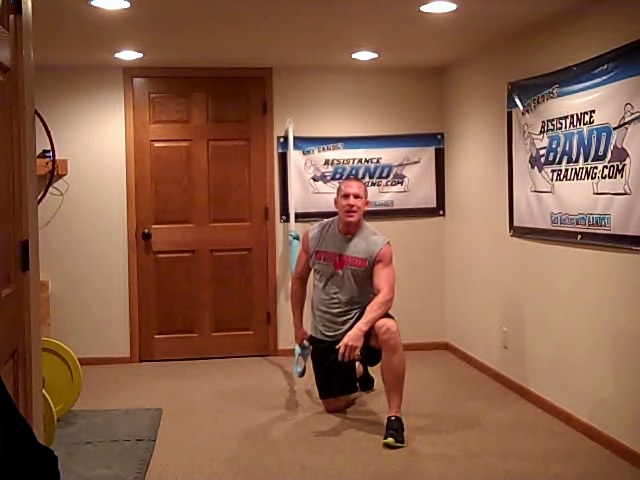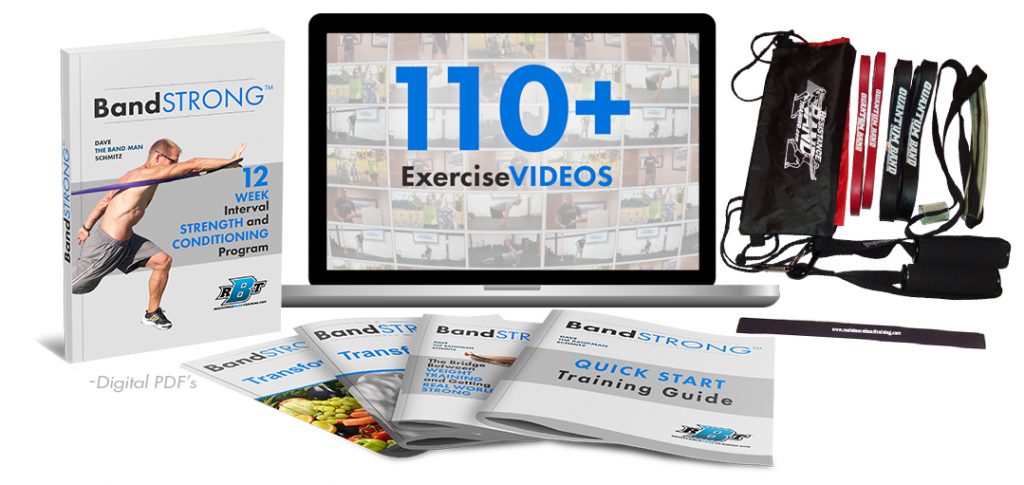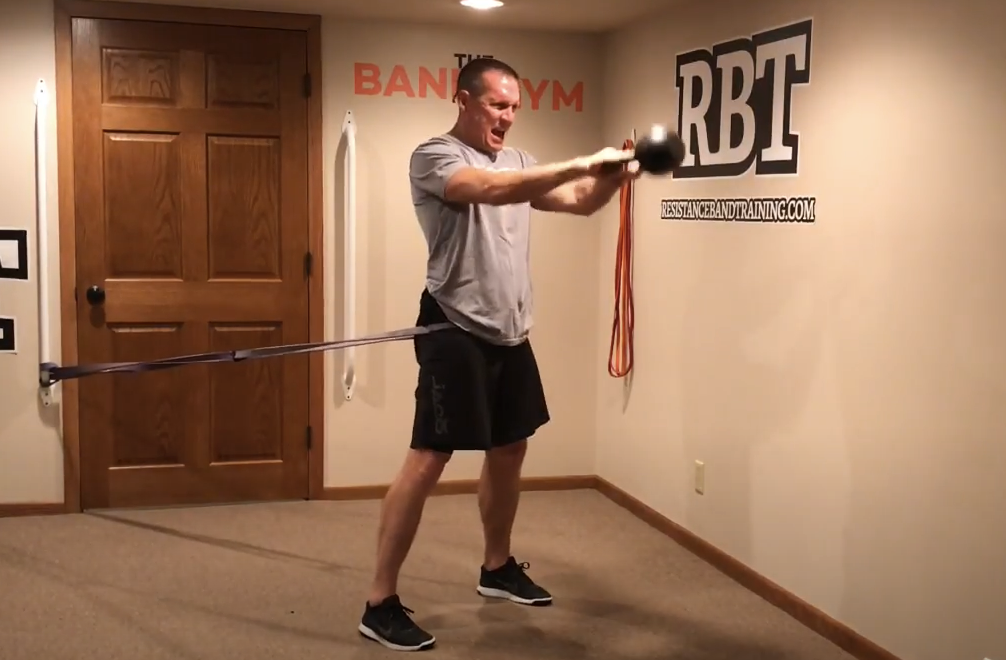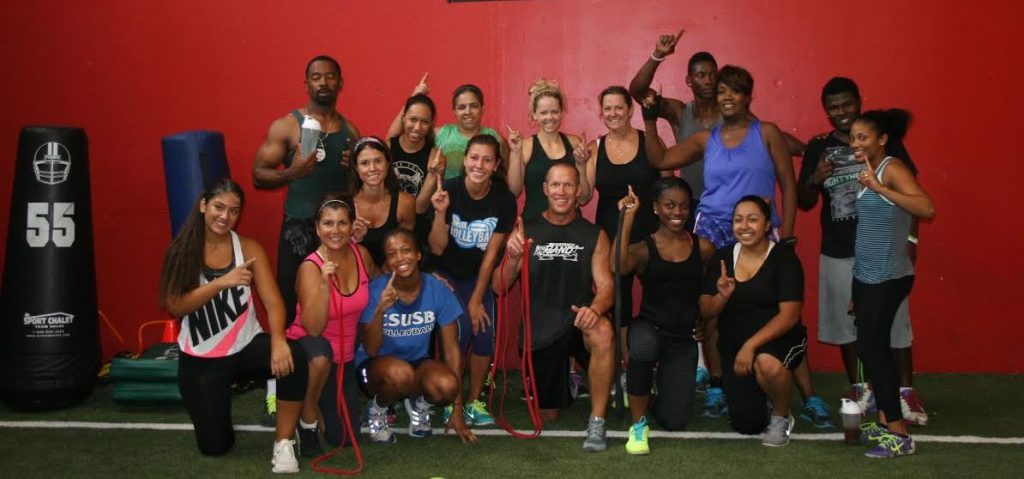How to Get Faster Results With Band Training
I have spent over 20 years training and learning how to improve functional movement, strength, power, flexibility, agility, speed and quickness training with bands. To say I have made a lot of mistakes would be a total understatement. However, over time I have had a lot of success making 1000’s of fitness enthusiasts and athletes better training with bands.
Today, I want to share with you 10 ways to use band training that will help you as a fitness enthusiast reach your exercise goals faster—assuming your goals include looking, feeling and moving better.
10 Ways to Use Band Training to Reach Your Fitness Goals
1. Start band training TODAY!!
I know this seems pretty basic, but when I first saw bands I thought they were another silly fitness gimmick that could never create the challenge free weights could. That was in 1996!! They are not a gimmick and they do not do what weights do…they do more. Band training provides an automatic go-to workout option that allows you to train hard anywhere, anytime without, doing any movement without beating up your body.
2. Start stretching with bands, especially through the hips.
Fitness success over 40 will be a direct result of maintaining your joint mobility and muscle flexibility. The #1 reason men saw me for physical therapy was because they had lost their mobility, and as a result, their low back, knees and hip joints were paying the price. You are not going to beat father time, but you can definitely slow her down. Start stretching with BANDS!!
Hip stretching with bands
3. Start doing overhead pressing and pushing with bands.
Eliminate shoulder pain by starting to do overhead pressing and pushing with bands versus with free weights only. Bands allow you to modify an overhead press without putting a high degree of pressure on the rotator cuff which is the most injured structure in the shoulder. Plus, you will train end range stability which is where the rotator cuff becomes weakest as we age.
4. Add band circuits to your free weight training
Adding band circuits to your free weight training will take the pressure off your joints while still allowing you to burn a lot of calories following an interval strength program.
I’m not a body-builder but I like to keep my body looking good as I am sure many of you do. Unfortunately, only free weight training is not a good long-term solution for fitness longevity as the body ages. Fortunately, bands are a great long-term workout solution due their ability to lessen post exercise soreness. Also since muscles are dumb, they won’t know the difference between band resistance and free weight resistance, but I promise your joints will.
5. Take the load off your back and start squatting with bands.
Squatting is one of those exercises you want to be able to keep doing for a long time because of its strong carry over into daily function. Unfortunately, free weight squatting over time is going to be hard on your low back. Band front squats, RDLs and lateral lunges keep the hips strong and healthy without placing undue stress on your low back muscles, spine and disk structures.
6. Learn how to deal with momentum.
Learning how to deal with momentum goes a long way in keeping your body injury free. If you can train the body to learn how to handle awkward movements like tripping or slipping (that result in us losing our balance and control), you can prevent a lot of potential injuries to ligament, cartilage and tendons.
Age is going to slow down our reaction time as will always training slow with free weights. Training with resistance bands using different rep speeds, movement patterns and force application, it will keep your muscles quickly reacting to changes in momentum when will carry over in protecting you when unexpected awkward movements occur.
Teaching the body how to stay reactive
7. Drop the sit-ups.
Start training the abs the way they were intended to work. Bands train the abs to become reactive stabilizers (protectors) of the low back, which is their real job. Training abs to be reactors i possible because bands allow you to train the abs using multiple force vectors at multiple speeds and at multiple resistance levels. Because the abs anatomically align themselves in 3 distinct planes, bands are perfect at training “Usable” ab strength.
Training your abs the right way with bands
8. Make sure your program is consistent.
The key to a successful program is consistency. You are going to have times when getting to the gym is simply not going to work. There will also be times when all you want to do is go by yourself, some place like a park or your basement, and just get after it. Creating a simple home-travel band gym solution makes working out convenient, which is important when life gets busy. Routinely missing workouts will guarantee poor results.
9. Get everyone around you on board.
My wife joins me 2 times per week to work out at my band only boot camp. Having her on board with band training makes it super easy for me to stay motivated since she is also working hard to keep herself in great shape.
Plus, like all of us, weights don’t always agree with her joints. Fortunately, band training provides her with a strength training option outside of weights. All three of my children grew up learning how to train with bands. Now as they move on from college athletics into adulthood, they not only know the importance of strength training, but they are also aware of alternative options besides weights.
10. Band train along with free weight training.
Lifting weights is going to create trauma to your muscles and joints. That’s normal and expected. The problem is over time free weights are going to breakdown your joints and tendons to the point where strength training is no longer fun or tolerable due to joint pain.
Band training along with free weight training will still allow you to strength train regularly, but not at the expense of beating up your joints. Alternating band training with free weights will not only feel better, but muscles will respond better.
Why band training is joint friendly
Wrapping it Up
I hope this blog post inspires you to give band training a try, get back using bands, or start training harder with bands. Honestly, at age 56, bands have been far more than a professional career for me. They have helped me stay functionally young, and I am confident they can do the same for you.




